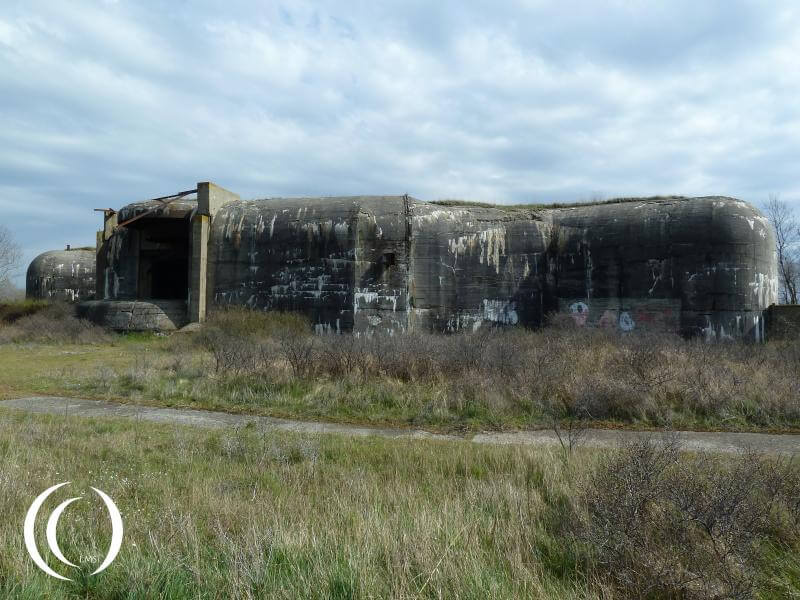
Just east of the French town Calais lies a huge German Coastal battery with the name “Oldenburg”. This battery was part of the defence of the Strait of Dover like Battery Todt, Battery Lindemann and other heavy batteries in Nord-Pas-de-Calais. Of these heavy batteries, Oldenburg is the easternmost heavy battery.
This chain of batteries was built by the Germans in the French, Pas de Calais and by the British on the other side of the Strait of Dover as well. Both sides defended the Strait of Dover from invaders and ships, and bombed each other with their huge guns.

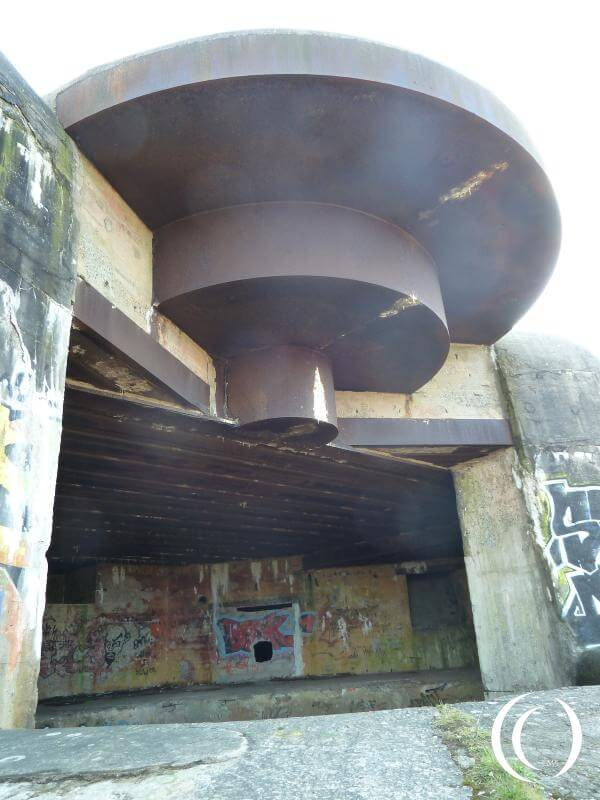
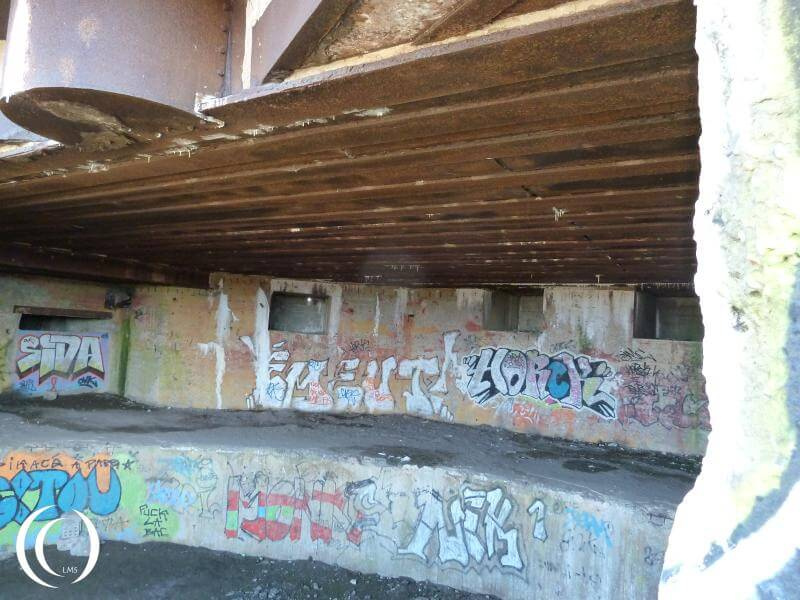
Hellfire Corner
The guns used in these batteries came from railroad- or navy guns with calibers from 200 to 406 mm. They could hurl projectiles over the Strait of Dover on targets within the borders of the enemy. Both armies on either side of the Channel had these weapons and the Strait of Dover soon got nicknamed “Hellfire Corner”.
German battery Oldenburg is called Stp. 18, M.K.B. Oldenburg. Stp 18 means Stützpunkt 18 which stands for Military base nr 18 and M.K.B. stands for Marine Küstenbatterie – Navy Coastal Battery.
Construction
The construction of battery Oldenburg started in July 1940 after the invasion of France and was tasked to support Operation Sea lion (Unternehmen Seelöwe), the invasion of England. The battery, part of the Atlantic Wall, was under the command of 2./MAA 244 in 1941. 2./MAA stands for 2nd Battery from the Marine Artillery section nr 244 (2. Batterie/ Marine Artillerieabteilung 244 in German).
At first the guns were placed in an open emplacement but somewhere during 1942 they were housed in two casemates. The two guns from battery Oldenburg originate from World War One and are of Russian origin. The German army captured them near the city of Libau, Latvia in 1915 and transported them to Germany.

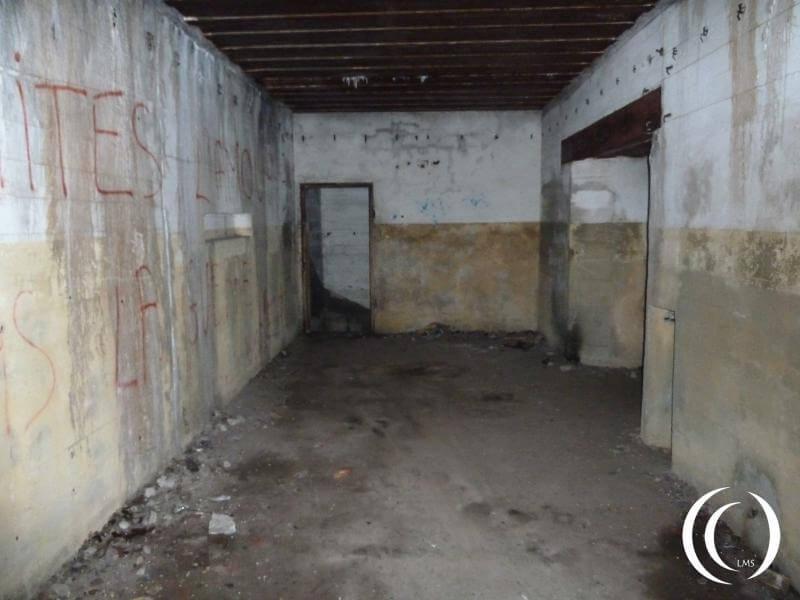

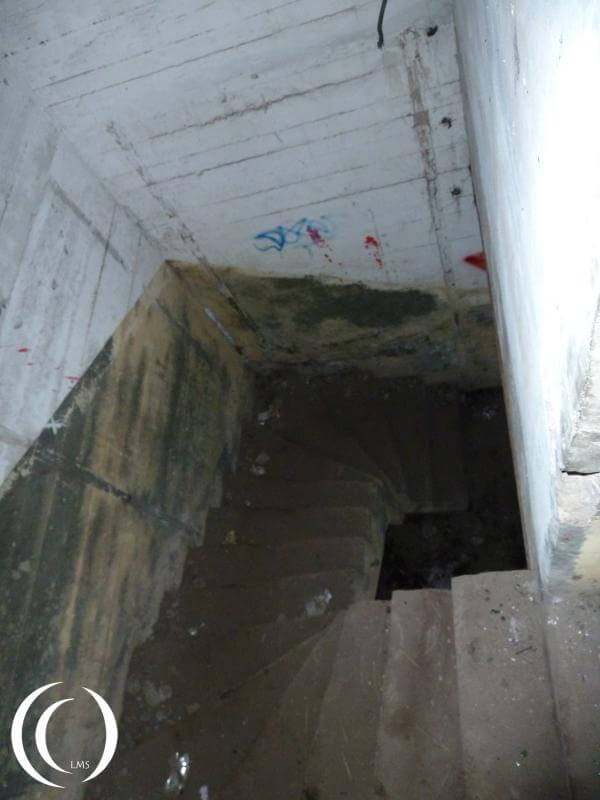
The Krupp company, well known for its guns during the First and Second World War, re-chambered the guns from 255mm to the German standard 240mm and equipped them with gun shields. They were able to fire a 150 kg shell to a distance of 27 -28 km. The guns from Battery Oldenburg didn’t reach the English mainland as the guns of Battery Todt did, but they could defend the eastern shipping route in the Strait of Dover.
Both casemates are 35 meters long and 15 meters high above ground level. The western of the two casemates, Turm West, is two storeys deep, while the eastern casemate, Turm East, is three storeys deep.
On the top floors there are multiple ammunition storage compartments. In the basement there are toilets and machinery facility rooms. Another staircase in the Turm East brings you to a second basement filled with rooms. This third floor is missing in the Turm West. The two casemates are situated 200 meters apart and are placed in a slight offset from each other to achieve a bigger spread with both guns.
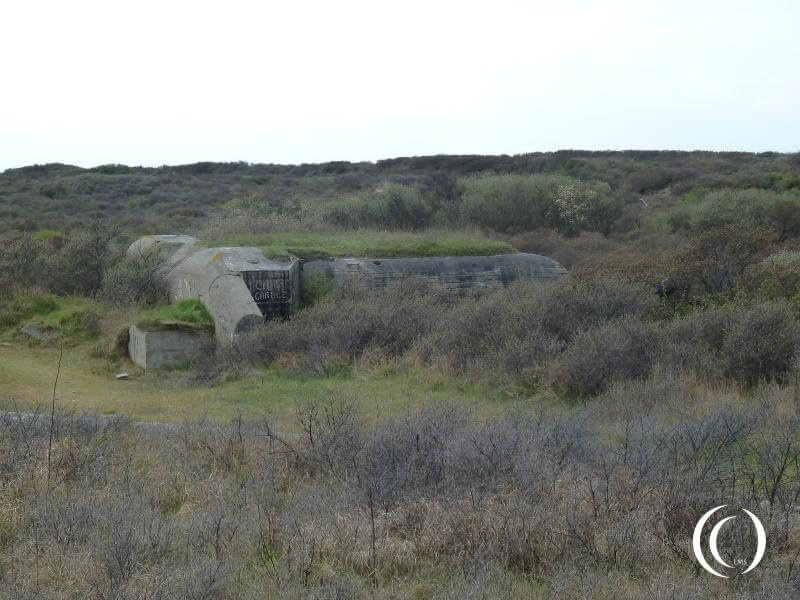


In the vicinity of both Casemates there are personal bunkers, ammunition storage bunkers and a Fire control bunker. Behind the Turms are personnel barracks said to be used by Organisation Todt, and the battery has its own hospital bunker, which is combined with the Fire control. The personnel bunkers are Regelbau 621, 629 and there are four types VF.
Defense
The battery was defended by two Russian 7.62mm guns placed in the dunes, and three German field guns. There were numerous gun nests and grenade launcher positions.
As air defence there were four French anti aircraft guns, two English 4cm anti aircraft guns and a German 2cm flakvierling, a four barrelled gun. The battery was attacked by 4 engine bombers and defended itself, taking down 16 bombers, 6 of them were shot down by the battery defences.

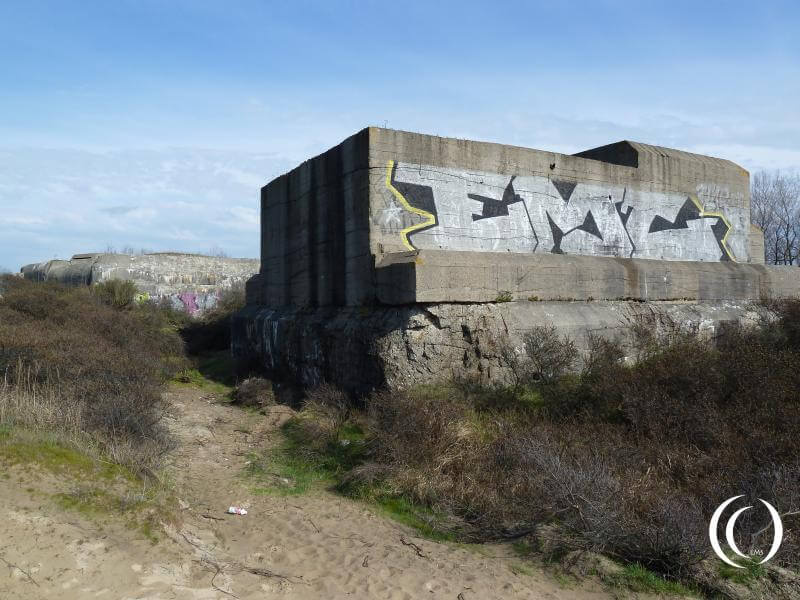
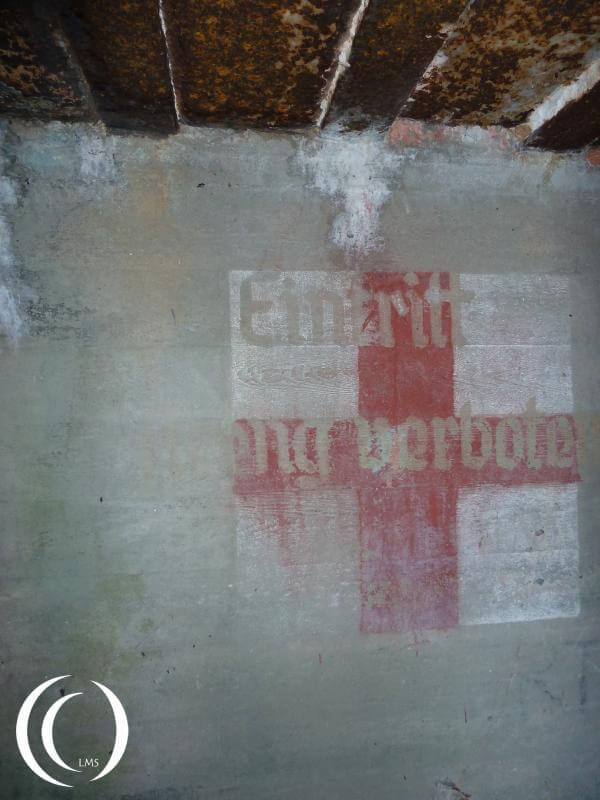
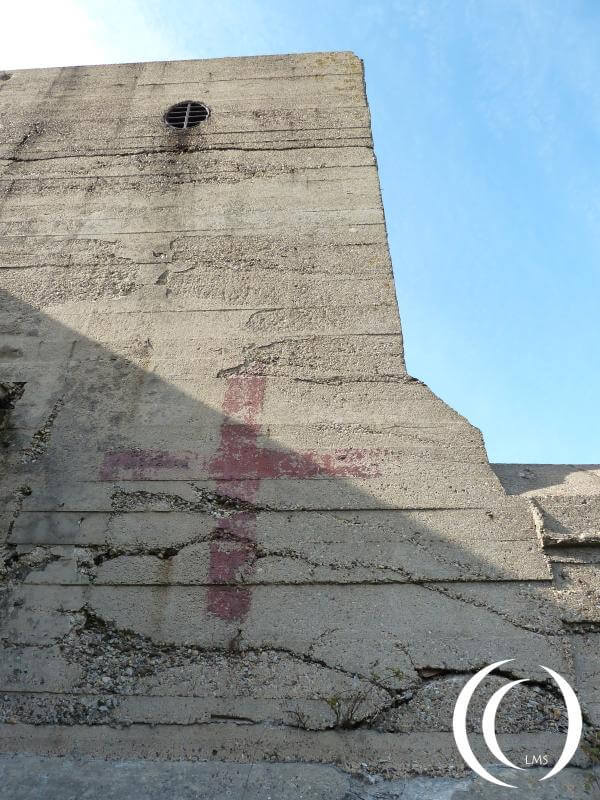
Capture
After overcoming their objectives in Normandy the 3rd Canadian division stormed the fortress of Calais in 1944. The guns from all coastal batteries pointed towards the sea and were no use to defend the batteries from inland attacks. On October the 1st in 1944 Battery Oldenburg surrendered to these Canadian forces. Battery Oldenburg is also known as “Le Moulin Rouge”.
Visit
You will find Battery Oldenburg just east of the French city of Calais. It can be visited by walking around the east side of the former barrack compound. You will see both Turms (Eng. towers) from quite a distance away.
Be careful if you want to enter the huge gun emplacements. They are open but keep in mind that safety comes first. Your cell phone for instance probably will not work below meters of concrete in the basement. A simple call for help can suddenly not be so simple after all.
The western Turm has suffered from an internal explosion which destroyed parts of the floor and some rooms. The eastern Turm is complete.
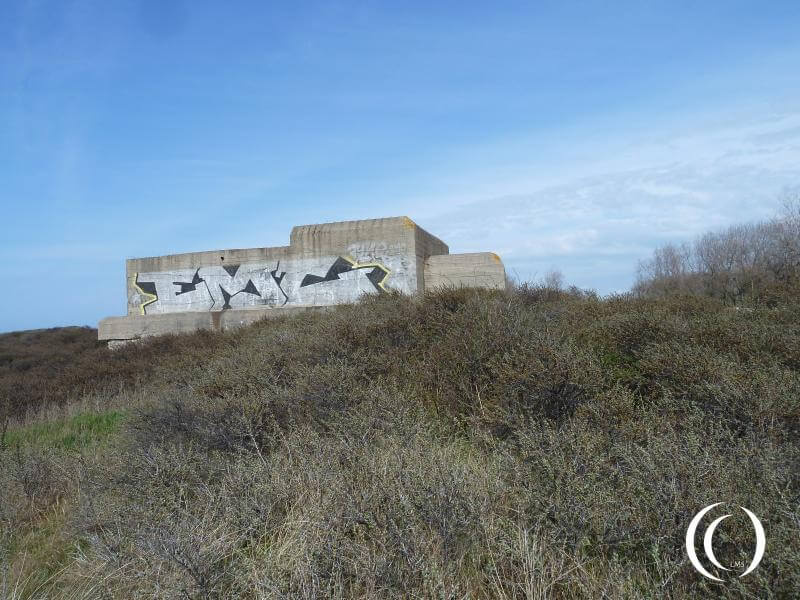
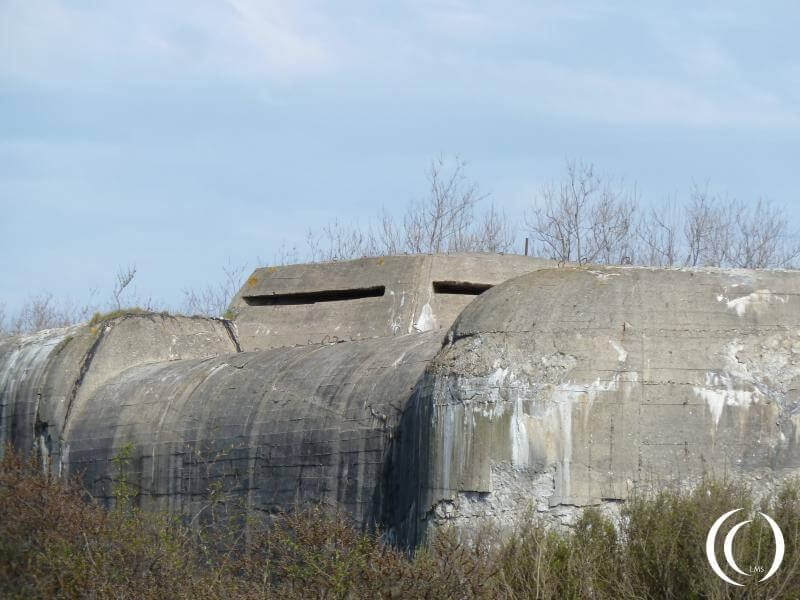

Beware of the natural defence of the Battery. The bushes around the bunkers and in the dunes are full of nasty thorns. We let out a lots of ai’s, auch-es and other foul words trying to get around the bunkers. To get this story clear; I don’t even think the Germans had to use barbed wire to defend the battery, the bushes are defence enough.
I went to visit this complex in the summer of 2016 but it was not accessible because of the migrants in the area. The police which were in heavy force had warned not go anywhere close to the area because of the danger of the migrants at the time, there was a lot of trouble going on. Is there an area that you can recommend of where to park a car nearby the next time I go? I believe the migrants have since been cleared from that area I heard.
Or do you think it’s best to park far away and hike in?
Thanks so much…
Hi Dave,
Sorry to hear of your unsuccessful visit last summer. I hope the recent events don’t encourage the authorities to tear the bunkers down or bury them under the sand like they did with Battery Lindemann. It seems the migrants are still in the area, but near the logistics area: https://goo.gl/maps/sCq5hSqfTy52 depending on how recent the pictures are.
If you have enough time I recommend hiking in and leave the car in a public area. When we were there we parked fairly close by Oldenburg: https://goo.gl/maps/fxK9pSaicQJ2 near the entrance of the old troops complex. Walk a little bit further down the Chemin des Dunes and turn left onto a sand trail around the compound wall.
Although there weren’t any migrants or police around at that time, there were some dodgy types hanging around I remember. Maybe best to go with a mate.
A little bit further up the coast is Battery Waldam. It’s in the middle of a duck hunting area (see the ponds on maps). The hunters don’t like strangers and try to scare you off. But they have a small public car park there: https://goo.gl/maps/4gPhPawTQ2J2. Their club house is in one of the bunkers along the beach road.
Let us know how it went!
Hi and thanks for the reply, that was very prompt.
I also appreciate the two maps that you sent. I was able to see a number of bunkers in the area one was WN Rheinhilde which as you mentioned was close to the duck hunting area but with Rheinhilde located further east, if I had continued walking west I would have gotten to Waldman then up the coast to Oldenberg. I don’t come back to Europe as often as I would like as I live overseas. I would love to come visit again maybe next year.
I read that the Lindeman batterie was purposely sunk beneath the sand and flooded as part of the massive chunnel construction project. It would have been such a treasure for it to have been preserved. They should all be preserved and looked after for generations to come, they are part of history.
I will definitely hike in on the next trip it sounds like the best idea. I took a lot of photos and plan to post a blog with trip details etc. I will post the link here when I have finished it.
Thanks again I really appreciate the kind response.
I forgot to mention that the local police had only closed the roads Chemin des Dunes and Digue Taaf leading to the CLSH Jules Ferry offices which are based directly in front of the Batterie Oldenberg and to the right of the now abandoned “jungle camp” which is where the migrants were. The migrants were not at the batterie itself, just the surrounding area.
Hello. Latest update. Visited the batterie last weekend (28/4/17) its easily accessible . The refuge camp has gone and the welfare centre is abandoned. You can walk straight through the centre to get to the batterie. We parked outside of the welfare centre for well over an hour. No one bothered us…
I went last weekend and it was perfectly safe.
Greetings. I have just visited Oldenburg and entered Turm East. Whilst exploring the lowest 2nd evel my daughter and I got short of breathe and encountered breathing problems. Not sure if this was a pocket of bad air. Could be low oxygen or maybe gas? Just a heads up to be careful. There was a police presence near the hunting section and we where told not to enter Turm West as some migrants where sleeping in there. This is an amazing location but please be cautious exploring inside.
A very useful and informative article, thank you. I visited the area in January 2020 and found it accessible. There were signs of habitation but no one about aside from regular police patrols.
Anyone have any idea how this battery got the name “Oldenburg”? Also why was it called Le Moulin Rouge?
We came across bad in the lower section of one of the casemates. Not sure what it was but we had trouble getting our breath. Maybe gas.
Good to hear you came out safely Ian and that you put a warning up here!
When we go into lower bunker sections, we bring a gas-meter nowadays since we have had the same experience in a Maginot line bunker system once.
yeah gas meter a must have